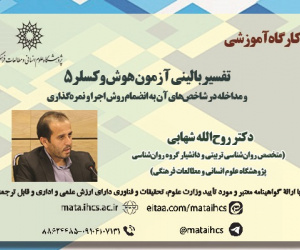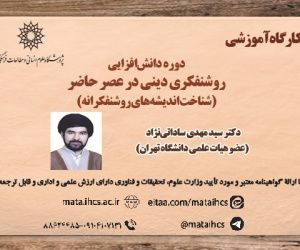تنظیر یا استعاره های نظری؛ الگوی نوآوری در علم انسانی (با نگاهی به دیدگاه های فلسفی گادامر و علامه طباطبایی) (مقاله پژوهشی حوزه)
درجه علمی: علمی-پژوهشی (حوزوی)
آرشیو
چکیده
دانشگاه ها و حوزه های علمیه همواره از شعار نوآوری در علوم انسانی استقبال می کنند؛ اما با وجود تلاش های قابل توجه در این زمینه، در عمل موفقیت چندانی به دست نیامده است. این مقاله در تلاش است با رویکرد فلسفی و روش منطقی- تمثیلی به این سؤال پاسخ دهد که «نوآوری در علوم انسانی چیست و چگونه یک اندیشه جدید متولد می شود؟» به نظر می رسد میان شاخه های سه گانه حکمت (نظری، عملی و شعری)، این حکمت شعری (هنر) است که ادعای تولید و نوآوری دارد؛ از این رو اگر حکمت شعری به خدمت حکمت نظری درآید، می تواند قفل های خلاقیت در علوم انسانی را باز کند. پیوند این دو ساحت از حکمت در علوم انسانی منجر به «گذر-واژه هایی» خواهد شد که آن را «استعاره های نظری» نامیده ایم. نمونه های متعددی از استعاره های نظری در فلسفه، عرفان و فقه تا جامعه شناسی و روان شناسی در این مقاله بحث شده است. در گام دوم، «استعاره نظری» را در دو مسیر متفاوت تبیین نمودیم؛ یکی در رویکرد هرمنوتیک فلسفی گادامر تحت عنوان «امتزاج افق ها» و دیگری در فلسفه رئالیستی علامه طباطبایی تحت عنوان «اعتباریات». پس از بررسی دیدگاه های این دو اندیشمند، نوآوری در علم انسانی به «تنظیر» (به جای استعاره نظری، امتزاج افق ها و اعتباریات) تعریف شد و سه مرحله «نظر، تنظیر و مناظره» به عنوان الگویی برای نوآوری پیشنهاد گردید.Likening or Theoretical Metaphors; The Model of Innovation in the Humanities (with a view to the Philosophical Opinions of Gadamer and Allameh Tabatabai)
Universities and seminaries always welcome the slogan of innovation in humanities; But despite significant efforts in this field, not much success has been achieved in practice. This article, with a philosophical approach and a logical-paradigmatic method, is trying to answer the question: What is innovation in humanities and how is a new thought born? It seems that among the three branches of wisdom (theoretical, practical and poetic), it is poetic wisdom (art) that claims production and innovation. Therefore, if poetic wisdom serves theoretical wisdom, it can open the locks of creativity in humanities. The connection of these two areas of wisdom in the humanities will lead to "pass-words" which we have called "theoretical metaphors". Numerous examples of theoretical metaphors in philosophy, mysticism and jurisprudence to sociology and psychology have been discussed in this article. In the second step, we explained "theoretical metaphor" in two different ways; one is in Gadamer's philosophical hermeneutic approach under the title of "fusion of horizons" and the other in the realist philosophy of Allameh Tabatabai under the title of "i`tibariyat". After examining the views of these two thinkers, innovation in the humanities was defined as "innovation" (instead of metaphorical theory, a fusion of horizons and i`tibariyat) and the three stages of "opinion, innovation and debate" were proposed as a model for innovation.







